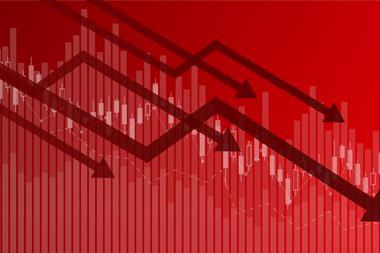’Reinsurance that protects us as insurers has risen across the piece,’ says managing director
Inflation, geopolitical uncertainty and a growing prevalence of damaging natural disasters led to significant price rises at reinsurance renewals on 1 January 2021 that the insurance sector must “face into”.
Following these price hikes, Insurance Times asked senior leaders in insurance what the impact would be.
Lee Mooney, RSA’s managing director for commercial lines, said the “reinsurance that protects us as insurers has risen across the piece”, with some lines seeing “double digit” increases.
“We’ve had to protect our customers [and] our business accordingly, but it’s a rising cost we have to face into – alongside supply chain inflation and other factors that are emerging in terms of the economic situation.
”These are all headwinds that we need to make sure that we can sustain as a company.”

In November 2022, GlobalData highlighted that upped reinsurance costs posed a “serious threat” to insurers, as firms planned price increases of between 10% and 30% in the lead up to January renewals.
However, at this time, it said it was “too early to tell” whether reinsurers would achieve their price ambitions.
After considering adjustments for risk and inflation, Hannover Re reported in February 2023 an average price increase of 8% on the reinsurance treaties it chose to renew.
Howden’s global property catastrophe risk adjusted rate online index, meanwhile, rose by an average of 37% – up from a 9% increase the previous year.
Customer impact
Echoing Mooney’s sentiments, Axa Commercial’s chief underwriting officer David Ovenden said that reinsurers’ rates and expectations around the level of risk accepted by insurers ”had increased dramatically”.
Read: Insurance firms have ‘duty to act ethically’ over green finance – CII
Read: Economic challenges temper marine underwriters’ performance – IUMI
Explore more financial-related content here or discover other news analysis stories here
“Coverage has also been restricted, with removal of some types of cover and the narrowing of some definitions such as hours clauses,” he said.
”Price rises vary widely depending on the line of business, portfolio mix and attachment point, with minimum rates for upper layers seeing the biggest increases.”
Ovenden claimed that these “significant changes” could contribute to increasing costs for insurers, some of which “may need to be passed onto customers”.
However, he said Axa would “continue to absorb extra costs and pressures as much as possible to ensure our customers are treated fairly”.
To mitigate the risks created by rising costs, Benjamin Hatton, insurance analyst at GlobalData, highlighted there was “no silver bullet or short-term solution”.
But, he said (re)insurers were “aware” of their role in combating climate change and were ”starting to take an active role in minimising environmentally harmful activity, such as not underwriting new oil or gas pipelines or projects”.
He continued: “The solutions generally revolve around either minimising and mitigating claims through [using] technology tools – such as internet of things devices and better prediction or prevention techniques – or by reducing the global protection gap to minimise the losses caused by natural catastrophe and other major risks.”
Hosted by comedian and actor Tom Allen, 34 Gold, 23 Silver and 22 Bronze awards were handed out across an amazing 34 categories recognising brilliance and innovation right across the breadth of UK general insurance.




















































No comments yet